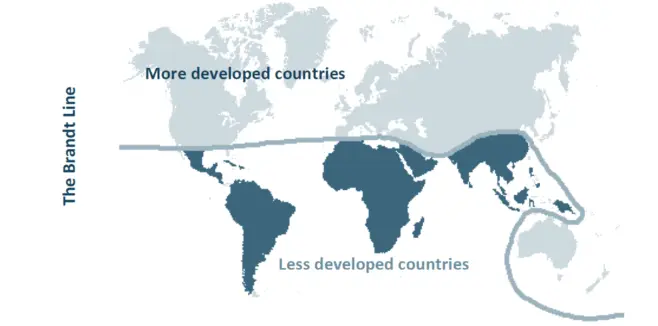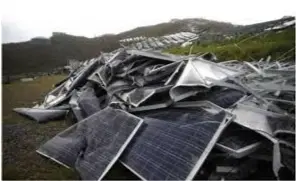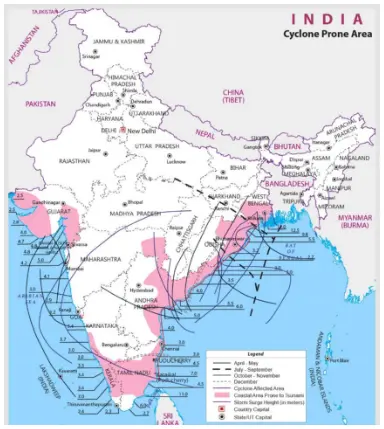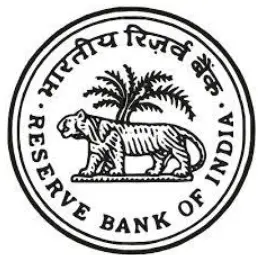Monday, 8th April 2024
Human Rights and the Environment
In News: A coalition of universities has issued a collective statement urging the International Criminal Court (ICC) to intervene in addressing the nexus between environmental degradation and human rights violations.
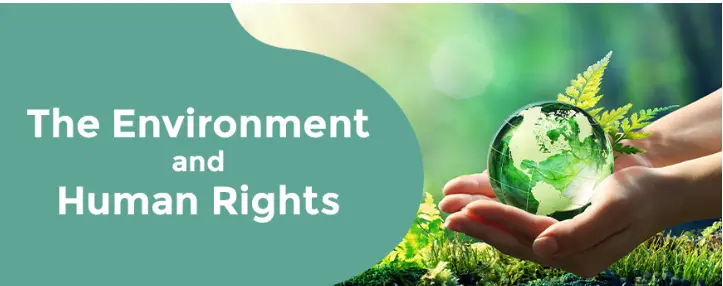
Link Between Human Rights and the Environment
Definition of Human Rights
- Human rights, according to the United Nations (UN), are inherent to all individuals, irrespective of factors such as race, gender, nationality, or religion.
- These rights are intrinsic to human beings and are not granted by any state.
- The Universal Declaration of Human Rights (UDHR) was adopted by the UN General Assembly in 1948, outlining fundamental rights such as the right to life, liberty, and education, among others.
Need for Environment as Human Rights
- While human rights gained prominence after World War II, the right to a healthy environment was often overlooked.
- A healthy environment is essential for the right to life, not only for humans but also for other species.
- Violation of the right to a healthy environment can endanger lives and well-being, impacting current and future generations.
Recognizing the Right to a Healthy Environment
- The right to a clean, healthy, and sustainable environment (R2hE) acknowledges individuals' entitlement to an environment conducive to well-being and basic needs fulfillment.
- This right highlights the interdependence between human well-being and environmental health.
Challenges and Concerns
- Legal Hurdles: Holding perpetrators accountable for environmental crimes faces significant legal challenges, necessitating better international cooperation and stronger national legislation.
- Transnational Nature of Environmental Crimes: Environmental crimes often transcend borders due to interconnected environmental systems and global trade in natural resources.
- Money Laundering from Environmental Crime: Criminals exploit environmental crimes for financial gain, using front companies to launder money, as highlighted by the Financial Action Task Force (FATF).
- Illicit Financial Flows: The United States becomes a destination for proceeds from environmental crimes, undermining efforts to combat illicit financial flows and address climate change.
Right to Healthy Environment in India
- Article 21 of the Indian Constitution guarantees the right to life and personal liberty, which the Supreme Court has interpreted to include the right to a clean environment.
International Efforts Related to the Right to Healthy Environment
- In July 2022, the UN General Assembly adopted a resolution affirming everyone's right to a healthy environment, urging states, international organizations, and businesses to ensure environmental well-being.
- The 1972 Human Conference on Human Environment emphasized the need to safeguard natural resources for present and future generations.
- The World Commission on Environment and Development's 1987 report introduced principles for environmental protection and sustainable development.
- Initiatives such as 'Caring for the Earth 1991' and the 'Earth Summit' of 1992 emphasized human beings' right to a healthy environment.
Cases Related to a Healthy Environment
- M.C Mehta v. UOI, 1986: Directives were issued to raise environmental awareness through various means.
- M. C Mehta v. Kamal Nath, 1996: The Supreme Court emphasized the importance of preserving basic environmental elements.
- Rural Litigation and Entitlement Kendra v. State of U.P, 1985: Limestone mining detrimental to the environment was prohibited.
- Tarun Bharat Sangh (NGO) v. UOI, 1993: Closure of marble mines threatening wildlife was ordered.
- Preventing Pollution of Ganga and Yamuna, 1995: Polluting industries along riverbanks were directed to be removed.
Way Forward
- Incorporating R2hE into the International Criminal Court's legal framework is crucial.
- Prosecuting environmental crimes and addressing underlying structural issues are imperative.
- International cooperation, regulatory closure, and enhanced enforcement mechanisms are vital.
- Initiatives to combat corruption, enhance financial transparency, and strengthen anti-money laundering measures are indispensable.
- India should focus on enforcing environmental laws effectively and updating them to address emerging challenges
|
UPSC Previous Year Questions Prelims (2020) Q. Other than the Fundamental Rights, which of the following parts of the Constitution of India reflect/ reflects the principles and provisions of the Universal Declaration of Human Rights (1948)?
Select the correct answer using the code given below: (a) 1 and 2 only Ans: D Mains (2021) Q. Though the Human Rights Commissions have contributed immensely to the protection of human rights in India, yet they have failed to assert themselves against the mighty and powerful. Analysing their structural and practical limitations, suggest remedial measures. |
Source: DTE
Water Crisis in South India
In News: Severe water scarcity is plaguing the southern states of India, notably Karnataka, Tamil Nadu, Andhra Pradesh, and Telangana, primarily attributable to alarmingly low water levels in key reservoirs.
Current Water Crisis in Southern States
Overview of Water Situation
- According to the Central Water Commission, major reservoirs in Karnataka, Tamil Nadu, Andhra Pradesh, and Telangana are filled to only 25% of their capacity or even less.
- Notable dams like Tungabhadra in Karnataka and Nagarjuna Sagar on the Andhra Pradesh-Telangana border have water levels at 5% or less of their full capacity.
- Mettur dam in Tamil Nadu and Srisailam on the Andhra Pradesh-Telangana border also report low levels, with less than 30% of their capacity filled.
Comparison of Water Levels Across Regions
- Reservoirs in the southern region are severely affected, collectively filled to only 23% of their capacity, much lower than last year and the 10-year average.
- In contrast, other regions like northern, central, western, and eastern India have reservoir levels closer to their 10-year averages.
Exception in Kerala
- Kerala stands out among southern states with most major dams filled to at least 50% of their capacities.
- Reservoirs like Idukki, Idamalayar, Kallada, and Kakki report relatively better water levels.
Reasons for the Water Crisis in South India
- Rainfall Deficiency and El Niño Effect
- Lower rainfall due to El Niño events has caused drought-like conditions and prolonged dry spells in the region.
- El Niño, characterized by Pacific Ocean warming, disrupts normal weather patterns globally, leading to reduced rainfall in certain regions.
- Delayed Monsoon and Post-Monsoon Deficiency
- Insufficient rainfall during the Monsoon and post-monsoon seasons has significantly contributed to reservoir water depletion.
- Delayed onset and inadequate rainfall during crucial periods worsen the situation.
- Increased Temperature and Evaporation
- Rising temperatures from global warming accelerate evaporation rates, depleting reservoirs faster.
- Higher temperatures exacerbate drought conditions, increasing water demand for various purposes.
- Groundwater Depletion
- Excessive groundwater extraction for irrigation, especially in regions with inadequate surface water sources, has led to depletion.
- Pollution of Water Bodies
- Industrial discharge, untreated sewage, and solid waste dumping have contaminated water sources, further reducing available water.
- Mismanagement and Inequitable Distribution
- Inefficient water management practices, including wastage and unequal distribution, worsen the water scarcity crisis.
Implications of the Water Crisis in India
- Health Issues
- Inadequate access to safe drinking water can lead to dehydration, infections, diseases, and fatalities.
- Reports indicate a significant number of deaths annually due to water-related issues in India.
- Ecosystem Damage
- Water scarcity threatens wildlife, habitats, biodiversity, and ecological balance, disrupting ecosystems.
- Reduced Agriculture Productivity
- Water scarcity negatively impacts agriculture, leading to lower crop yields, food insecurity, and poverty among farmers.
- Economic Losses
- Water scarcity affects industrial production, energy generation, water supply costs, and sectors like tourism and trade.
Way Forward
- Comprehensive approaches including sustainable water management, conservation, infrastructure investment, water-efficient technologies, and public awareness campaigns are necessary.
- Adoption of Integrated Water Resources Management (IWRM) involving diverse stakeholders is crucial for ecological and economic benefits.
- Encouraging farmers to adopt water-efficient farming practices such as drip irrigation and precision agriculture can significantly conserve water and enhance crop yields.
- Coordinated efforts at national, state, and local levels are essential to mitigate water scarcity impacts and ensure sustainable water management for future generations.
|
UPSC Previous Year Questions Prelims (2021) Q. Which one of the following ancient towns is well known for its elaborate system of water harvesting and management by building a series of dams and channelizing water into connected reservoirs? (a) Dholavira (b) Kalibangan (c) Rakhigarhi (d) Ropar Ans: A Prelims (2021) Q.2. With reference to ‘Water Credit’, consider the following statements:
Which of the statements given above are correct? (a) 1 and 2 only (b) 2 and 3 only (c) 1 and 3 only (d) 1, 2 and 3 Ans: C Mains (2020) Q.1 What are the salient features of the Jal Shakti Abhiyan launched by the Government of India for water conservation and water security? Q.2 Suggest measures to improve water storage and irrigation system to make its judicious use under the depleting scenario. |
Source: TH
The Armed Forces (Special Powers) Act
In News: The Union Ministry of Home Affairs (MHA) has recently announced the extension of the Armed Forces (Special Powers) Act, 1958, for an additional six months in certain areas of Nagaland and Arunachal Pradesh.
Overview of AFSPA
The Armed Forces (Special Powers) Act (AFSPA) was enacted in 1958 to address security challenges in disturbed areas, particularly in the North-eastern States and Jammu and Kashmir.
Definition of Disturbed Areas
- A disturbed area is one declared by notification under Section 3 of AFSPA, necessitating the use of armed forces in aid of civil power.
- Such areas can arise due to various conflicts including religious, racial, linguistic, or regional disputes.
- The declaration of a disturbed area can be made by the Central government, Governor of the State, or Union Territory administrator.
Arguments in Favor of AFSPA
- Addressing Ongoing Security Challenges: AFSPA is essential for combating persistent security threats in affected regions.
- Empowering Security Forces: It grants necessary powers to security forces for effective counter-insurgency operations.
- Legal Protections for Personnel: AFSPA provides legal safeguards for security personnel operating in troubled areas.
- Boosting Morale: Legal protections enhance morale among armed forces, crucial for maintaining efficiency in operations.
Arguments Against AFSPA
- Violation of State Autonomy: AFSPA undermines state autonomy by granting central government authority to designate disturbed areas.
- Excessive Use of Force: Concerns arise regarding the potential for excessive force usage under AFSPA.
- Violation of Civil Liberties: The Act allows for arrest and search without warrants, raising civil liberty concerns.
- Lack of Accountability: AFSPA's provisions for prosecution approval create a lack of accountability for security force actions.
Supreme Court's Guidelines
The Supreme Court upheld AFSPA's constitutionality in the 1998 Naga People's Movement of Human Rights v. Union of India case, outlining specific guidelines:
- Central government should consult with states before declaring disturbed areas.
- Declarations must have defined timeframes and undergo regular assessments.
- Authorized officers should use minimal force, adhering to army guidelines.
Way Forward
- Recommendations of Jeevan Reddy Committee
- The committee proposed repealing AFSPA and integrating its provisions into the Unlawful Activities (Prevention) Act, 1967.
- Grievance cells should be established in districts where armed forces are deployed.
- Second ARC Recommendations
- The Second Administrative Reforms Commission recommended AFSPA's repeal, yet these suggestions remain unimplemented.
- Recommendations of Santosh Hegde Commission
- AFSPA should be reviewed biannually for necessity and humanization.
- The Unlawful Activities (Prevention) Act could be amended to address terrorism without sole reliance on AFSPA.
- Armed forces should not be exempt from investigation for excesses, even in disturbed areas.
|
UPSC Previous Year Questions Mains (2015) Q. Human rights activists constantly highlight the fact that the Armed forces (Special Powers) Act, 1958 (AFSPA) is a draconian act leading to cases of human rights abuses by security forces. What sections of AFSPA are opposed by the activists? Critically evaluate the requirement with reference to the view held by the Apex Court. |
Source: TH
Green Credit Programme
In News: Recently, the Ministry of Environment, Forest and Climate Change (MoEFCC) has issued the Green Credit Rules 2023, thereby formally establishing the Green Credit Programme (GCP) for India.

Introduction to the Green Credit Programme (GCP)
- The Green Credit Initiative was launched by the Indian Prime Minister during COP 28, held in 2023 at Expo City, Dubai, United Arab Emirates.
- It operates under the government's Lifestyle for Environment (LiFE) movement, which aims to drive an international mass movement toward mindful and deliberate utilization to protect and preserve the environment.
Objectives and Implementation of the GCP
- The GCP introduces a market-based approach to incentivize eight identified environmental activities
- Initially, the focus is on water management and afforestation, with subsequent phases covering activities such as sustainable agriculture, waste management, and air pollution reduction.
- The rules for the GCP were notified on 12th October 2023 under the Environment Protection Act 1986, establishing a mechanism to encourage voluntary environmental positive actions resulting in the issuance of green credits.
Mechanisms and Implementation
- In its initial phase, voluntary tree plantation is envisioned on degraded land, wasteland, watershed areas, etc., under the control and management of Forest departments.
- Registered and approved entities can finance afforestation projects in specific tracts of degraded forest and wasteland, with afforestation carried out by State Forest departments.
- After two years and an evaluation by the International Council of Forestry Research and Education (ICFRE), each planted tree could be worth one ‘green credit’.
Compensatory Afforestation and Challenges
- Compensatory afforestation obliges industries or institutions that raze forest land for non-forestry purposes to provide an equivalent amount of non-forest land to forest authorities and pay for afforestation
- Issues arise due to challenges in obtaining contiguous non-forest land for compensatory afforestation, particularly in states with historically diverted tracts for mining.
- The Compensatory Afforestation Fund, funded by environmental compensation money paid by companies, has significant unspent funds due to the unavailability of suitable land for forest regeneration.
Issues and Concerns with GCP
- While green credits incentivize private investments in tree plantation, assigning a monetary value to such credits and linking them to compensatory afforestation activities presents challenges.
- Provisions such as the time taken to approve land as generating credits have been prioritized over other aspects, raising concerns regarding the scheme's efficacy.
Concluding Remarks on GCP
- Compensatory afforestation is one aspect of the GCP, which aims to encourage corporate social responsibility actions and regeneration efforts.
- However, challenges such as land availability and credit valuation require careful consideration for the successful implementation of the scheme.
Source: TH
Sierra Leone
In News: Sierra Leone's President has recently announced a state of national emergency concerning substance abuse in response to calls for his administration to address the increasing consumption of a low-cost and occasionally fatal synthetic substance called kush.
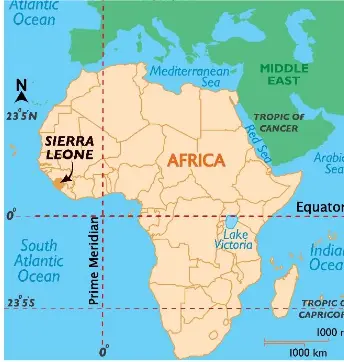
About Sierra Leone
- Sierra Leone is situated in West Africa, along the Atlantic coast, and is characterized by its tropical climate.
- The country shares its borders with Guinea to the north and east, Liberia to the south, and the Atlantic Ocean to the west.
- Its geography primarily consists of lightly wooded hills, with mangrove swamps concentrated along the coastline.
- Major rivers in Sierra Leone include the Rokel River, Taia River, Moa River, and Sewa River.
- Sierra Leone's history dates back to its colonization in 1787 by formerly enslaved people from England, with subsequent groups arriving from Nova Scotia in 1792 and Jamaica in 1800.
- Initially governed by the private Sierra Leone Company, the country became a crown colony of Britain in 1808 until gaining independence in 1961.
- The population of Sierra Leone is approximately 7.5 million, consisting of 16 ethnic groups, each with its own language and traditional attire.
- While English serves as the official language, the majority of the population understands and communicates in Krio.
- Sierra Leone operates as a constitutional republic, with a directly elected president and a unicameral legislature.
- The capital city, Freetown, is renowned for commanding one of the world's largest natural harbors.
- In terms of its economy, Sierra Leone relies heavily on subsistence agriculture, although it is also a significant mining center.
- The country's land is rich in resources such as diamonds, gold, bauxite, and rutile (titanium dioxide), contributing to its economic activity and development.
Source: TP
AgniKul's 'Agnibaan SOrTeD'
In News: The launch of AgniKul's 'Agnibaan SOrTeD' has been postponed for the second time.
About AgniKul's 'Agnibaan SOrTeD'
- Agnibaan SubOrbital Technological Demonstrator (SOrTeD) is a single-stage launch vehicle propelled by AgniKul's patented Agnilet engine, which is entirely 3D-printed and generates 6 kilonewtons (kN) of thrust, making it the world's first single-piece 3D-printed semi-cryogenic rocket engine.
- The launch of Agnibaan SOrTeD will take place from India's first private launchpad, ALP-01, situated within the premises of the Indian space agency ISRO's Sriharikota spaceport.
- Featuring India's inaugural vehicle equipped with a semi-cryogenic engine, the Agnilet, Agnibaan utilizes a subcooled liquid oxygen-based propulsion system developed domestically.
- Standing at a height of 18 meters and measuring 1.3 meters in diameter, Agnibaan has the capability to transport a 100-kg payload to heights of up to 700 km, with a lift-off mass of 14,000 kgs, and access both low- and high-inclination orbits while remaining entirely mobile.
- Additionally, Agnibaan is equipped with the first-ever Ethernet-based avionics architecture and fully in-house developed autopilot software from India, ensuring enhanced operational efficiency and control.
- Moreover, Agnibaan is designed for launch from more than 10 different launch ports, facilitated by the launch pedestal named 'Dhanush,' developed by AgniKul to support the rocket's mobility across all configurations.
- AgniKul Cosmos, an IIT Madras incubated space startup headquartered in Chennai, was established in 2017 and made history in December 2020 by becoming the first company in the country to sign an agreement with ISRO under the IN-SPACe initiative, granting access to ISRO's expertise and facilities to develop Agnibaan.
- Furthermore, in 2022, AgniKul inaugurated India's premier private launchpad and mission control center at Satish Dhawan Space Centre, marking a significant milestone in the nation's space exploration endeavors.
Source: TOI
Azad Hind Government
In News: Bollywood actor-turned-politician Kangana Ranaut sparked controversy when she asserted that Netaji Subhas Chandra Bose was India's inaugural prime minister. She referenced a news article clipping purportedly stating that Bose had proclaimed himself as the Prime Minister of 'Azad Hind' in 1943.
Azad Hind Government: Formation and Significance
- Formation and Leadership
- On October 21, 1943, Netaji Subhash Chandra Bose declared the establishment of the 'Arzi Hukumat-e-Azad Hind' or the provincial government of Free India in Singapore.
- Bose assumed multiple roles within the government, serving as the Head of State, Prime Minister, and Minister of War.
- Captain Lakshmi led the women’s organization, while SA Ayer supervised the publicity wing.
- Revolutionary leader Ras Behari Bose was appointed as the supreme adviser by Netaji Subhash Chandra Bose.
- Support and Significance
- Supported by Axis powers including Imperial Japan, Nazi Germany, and the Italian Social Republic, the Azad Hind government asserted authority over Indian civilians and military personnel in Southeast Asian British colonial territory.
- The government facilitated Bose's negotiations with the Japanese and mobilized Indian expatriates to join and support the Indian National Army (INA).
- The INA attracted ex-prisoners and civilian volunteers from Indian communities in Malaya and Burma.
- A provisional government was established in the Japanese-occupied Andaman and Nicobar Islands, later reoccupied by the British in 1945.
- Achievements and Initiatives
- The Azad Hind government introduced its own bank, currency, civil code, and stamps, asserting its administrative independence.
- Bose established the Rani Jhansi Regiment, the first women’s regiment of the INA, promoting gender equality in armed forces.
Source: HT
The Changpa Tribe
In News: Climate activist Sonam Wangchuk and the Leh Apex Body (LAB) have jointly decided to cancel the Pashmina border march.
The Changpa Tribe: Nomadic Pastoralists of the Changtang Plateau
- Introduction
- The Changpa, also known as Champa, are a semi-nomadic community primarily inhabiting the Changtang plateau in southeastern Ladakh, with a smaller population residing in western regions of the Tibet Autonomous Region in China. They share linguistic and cultural ties with Tibetans.
- Geographic Distribution and Livelihood
- The Changpa are high-altitude pastoralists, raising yaks and goats, predominantly at an average altitude of 4,500 meters above sea level.
- Their livelihood primarily revolves around animal husbandry, with a focus on rearing highly prized Changra goats for Pashmina (Cashmere) fiber, a luxurious material.
- Cultural and Religious Practices
- All Changpa families adhere to Tibetan Buddhism as their religion.
- Their distinctive conical yak-skin tents, known as reboo, often house family deities and images of spiritual leaders like the Dalai Lama.
- Semi-Nomadic Lifestyle
- The Changpa are divided into two groups based on their lifestyle: the nomadic Phalpa and the settled Fangpa.
- Animal rearing and trading of produce such as milk, hair, and meat constitute the primary source of income for many Changpas.
- Sustainable Practices
- Despite their reliance on animal products, the Changpa adhere to Buddhist principles that prohibit killing animals for meat. Instead, they utilize carcasses from natural deaths for meat and hide, used for various purposes including hut lining and garment making.
- Recognition and Status
- In 1989, the Changpa were officially recognized as a scheduled tribe in India, highlighting their cultural and historical significance in the region.
Source: TH
Nimmu-Padum-Darcha Road
In News: The Border Roads Organisation (BRO) has achieved a notable milestone by establishing connectivity on the 298-km Nimmu-Padam-Darcha Road in Ladakh.

Nimmu-Padum-Darcha Road: A Strategic Link in Ladakh
- Route and Description
- Stretching 298 kilometers from Manali (Himachal Pradesh) to Leh (Ladakh) via Darcha and Nimmu on the Kargil–Leh Highway, the NPDR is an all-weather road.
- Constructed by the Border Roads Organisation (BRO), it provides a vital link to Ladakh, complementing the existing Manali-Leh Road and Srinagar-Leh Road.
- Strategic Significance
- The NPDR is the third axis connecting Ladakh to the mainland, offering a shorter route compared to the other two axes.
- It crosses only one pass, Shinkun La (16,558 feet), where tunnel construction is set to begin by the BRO.
- Once completed, it will be the first all-weather road providing uninterrupted connectivity between Ladakh and the rest of India.
- Importance for Defence and Development
- Enhanced connectivity through the NPDR strengthens defence preparedness in the region.
- Additionally, it facilitates economic development in the Zanskar valley, opening up opportunities for trade and tourism.
- Conclusion
- The Nimmu-Padum-Darcha Road is not only a significant infrastructure project but also a symbol of progress and connectivity for the remote region of Ladakh, promising both strategic advantages and economic growth.
Source: ET
Trademarks
In News: The Delhi High Court recently ruled that the "Haldiram" mark is recognized as a well-known trademark concerning food items, restaurants, and eateries, not only within India but also internationally.
Understanding Well-known Trademarks and their Significance
Definition of Trademark
- A trademark is a unique symbol or indicator utilized by a business entity to differentiate its products or services from those of others.
- It acts as a distinctive identifier, exclusively associating a specific business as the source of goods or services.
- Trademark infringement occurs when an unauthorized party utilizes a sign that is identical or deceptively similar to a registered trademark.
Protection and Recognition
- The Trade Marks Act, 1999, offers protection to well-known trademarks to prevent misuse.
- It mandates the Registrar to safeguard these trademarks against similar ones.
- Once declared well-known, the trademark owner gains the authority to prevent others from registering or using identical or similar marks for different goods and services.
Factors Considered for Well-known Status
- When determining whether a trademark is well-known, various factors are assessed, including:
- The level of awareness or recognition of the mark among the relevant public in India.
- The duration, extent, and geographical area of the mark's use and promotion.
- The inherent or acquired distinctiveness of the mark.
- The trademark's registration status in India and other countries.
Significance of Well-known Trademarks
- Well-known trademarks are valuable assets for businesses, contributing to brand recognition, consumer trust, and market competitiveness.
- Their recognition grants them additional protection against unauthorized use, even for unrelated goods or services.
- This protection helps prevent consumer confusion and preserves the reputation and uniqueness of the mark.
Licensing and Franchising
- Owners of well-known trademarks have the option to license or franchise their marks to others, providing an additional revenue stream.
- This enables the trademark owner to expand their brand's reach and capitalize on its reputation.
Source: TH
Universities must budge on college autonomy nudge
In News: Recently, the Ministry of Environment, Forest and Climate Change (MoEFCC) has issued the Green Credit Rules 2023, thereby formally establishing the Green Credit Programme (GCP) for India.
NEP Recommendations for Higher Education
- Gross Enrolment Ratio (GER) to be raised to 50% by 2035, with the addition of 3.5 crore seats in higher education.
- Introduction of holistic undergraduate education with a flexible curriculum, offering multiple exit options and appropriate certification within 3 or 4 years.
- Discontinuation of M.Phil courses, making all undergraduate, postgraduate, and PhD courses interdisciplinary.
- Establishment of an Academic Bank of Credits to facilitate credit transfer.
- Creation of the National Research Foundation (NRF) to promote research culture and capacity building.
- Setting up of Multidisciplinary Education and Research Universities (MERUs) as models of multidisciplinary education.
- Formation of the Higher Education Commission of India (HECI) as a single umbrella body for higher education governance.
Significance of Granting Autonomy to Colleges
- Promotes innovation, academic quality, and institutional excellence.
- Allows colleges to tailor curriculum and teaching methodologies to meet evolving needs.
- Enhances institutional efficiency and fosters accountability and responsibility.
- Improves NIRF rankings, indicating enhanced academic performance and effectiveness.
- Reflects nationwide interest in autonomy, leading to transformative impact on higher education.
Concerns in Autonomous Functioning of Colleges
- Limitations imposed by universities on the extent of autonomy granted.
- Delays in recognition of autonomy, hindering operational efficiency.
- Imposition of arbitrary fees by universities for affiliation.
- Political interference in key leadership appointments and decision-making processes.
Suggestions for Enhancing College Autonomy
- Effective implementation of UGC regulations on autonomy by State Councils.
- Embracing trust and collaboration between universities and autonomous colleges.
- Creating a supportive environment that encourages innovation and excellence.
- Ensuring financial sustainability and independence for autonomous colleges.
- Introducing Choice-Based Credit System (CBCS) for profound education.
- Implementing College Enterprise Resource Planning (ERP) software for accreditation management.
Conclusion
Granting autonomy to colleges is crucial for promoting innovation, enhancing academic quality, and fostering institutional excellence. Effective implementation of autonomy requires collaboration among stakeholders to ensure a vibrant and dynamic higher education ecosystem.
|
UPSC Previous Year Questions Prelims (2012) Q. Which of the following provisions of the Constitution does India have a bearing on Education?
Select the correct answer using the codes given below: (a) 1 and 2 only Ans: (d) Mains (2021) Q1. Discuss the main objectives of Population Education and point out the measures to achieve them in India in detail. Mains (2020) Q2. How have digital initiatives in India contributed to the functioning of the education system in the country? Elaborate on your answer. |
Source: TH
Share the article
Edukemy’s Current Affairs Quiz is published with multiple choice questions for UPSC exams
MCQ
Get Latest Updates on Offers, Event dates, and free Mentorship sessions.

Get in touch with our Expert Academic Counsellors 👋
Frequently Asked Questions
UPSC Daily Current Affairs focuses on learning current events on a daily basis. An aspirant needs to study regular and updated information about current events, news, and relevant topics that are important for UPSC aspirants. It covers national and international affairs, government policies, socio-economic issues, science and technology advancements, and more.
UPSC Daily Current Affairs provides aspirants with a concise and comprehensive overview of the latest happenings and developments across various fields. It helps aspirants stay updated with current affairs and provides them with valuable insights and analysis, which are essential for answering questions in the UPSC examinations. It enhances their knowledge, analytical skills, and ability to connect current affairs with the UPSC syllabus.
UPSC Daily Current Affairs covers a wide range of topics, including politics, economics, science and technology, environment, social issues, governance, international relations, and more. It offers news summaries, in-depth analyses, editorials, opinion pieces, and relevant study materials. It also provides practice questions and quizzes to help aspirants test their understanding of current affairs.
Edukemy's UPSC Daily Current Affairs can be accessed through:
- UPSC Daily Current Affairs can be accessed through Current Affairs tab at the top of the Main Page of Edukemy.
- Edukemy Mobile app: The Daily Current Affairs can also be access through Edukemy Mobile App.
- Social media: Follow Edukemy’s official social media accounts or pages that provide UPSC Daily Current Affairs updates, including Facebook, Twitter, or Telegram channels.

